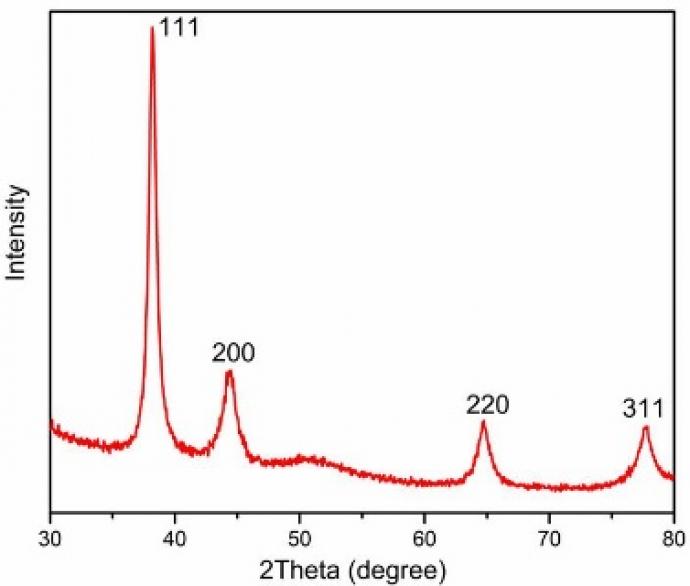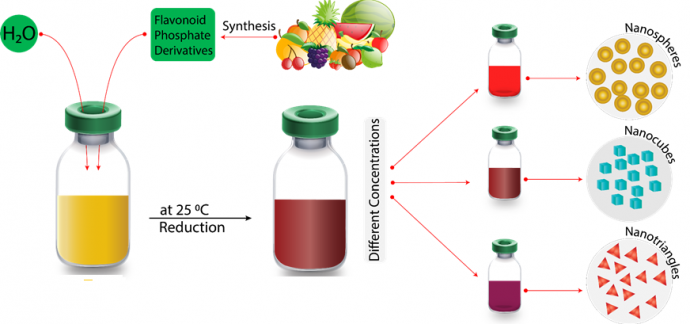Greener Materials and Processes
Sustainable nanotechnology relates to the research and development of nanomaterials that have economic and societal benefits, while at the same time, minimizing adverse environmental impacts. The demand for eco-friendly synthetic methods of metal nanoparticles is on the increase.
We have developed the concept of greener nanosynthesis for Ag, Au, Pt, Zn and Pd using water-soluble, naturally-derived flavonoids as reducing and stabilizing agents. Our approach utilizes only safe and non-toxic reagents for aqueous, low-temperature synthesis of cuboidal Au nanocubes (AuNCs) nanoparticles (Figure 4).
The synthetic methods require only HAuCl4 or AgNO3 precursors mixed with the flavonoids such as luteolin tetraphosphate, which appears to serve as both reducing agent and capping agent. Given the voluminous literature on colloidal synthesis of Au and Ag nanoparticles, finding a new and significant approach within this field is challenging (#6-8, 9, 10, 14, etc).




Figure 4: HRTEM images (a) showing morphology of AuNCs, (b) XRD pattern confirming the formation of crystalline gold and models (c) UV/Vis spectrometry with the SPR peaks at longer wavelength and (d) demonstrating truncated fcc gold nanocubes in which the orientations are along the projection vector [111].
Nanoscale materials can be used to achieve wastewater purification, desalination, and inactivation of pathogenic bacteria and viruses, as well as for the adsorption and degradation of contaminants. We have discovered that a new class of amphiphilic conducting polymers such as poly(amic) acid could be used to fabricate, nanoporous membranes with potential applications in water treatment.
The use of phosphorylation, which is of critical importance in protein biochemistry, to increase the solubility of luteolin and other flavonoids is a novel and original idea. This allows us to use flavonoids, which are found ubiquitously in plants and often ingested by humans, as a water-soluble reducing agent (Figure 5).


Figure 5: (left) Greener Nanosynthesis of anisotropic nanoparticles and (right ) quantitative removal and in situ detection of lead from water using naturally-derived quercetin pentaphosphate
Immobilization of lead in water and sediments using quercetin pentaphosphate: We are using similar greener approach for environmental cleanup and processes. Lead is currently ranked the number one heavy metal pollutant with a maximum contaminant level (MCL) of 0.015 mg/L. The use of organic-solvent free methods to immobilize lead from the environment is attracting the attention of scientists and environmental engineers. Results show 90.4 % and 91.5 % lead (II) immobilization from BRS and BU soil samples, respectively.
On the other hand, 91% lead immobilization efficiency from water sample was achieved at room temperature and complies with MCL level of 15ppm at ~ 3.82% error margin. This approach does not require the use of organic solvents or the disposal of large amounts of sludge. Once complexed with lead, QPP may not release phosphate to cause any secondary pollution (#17).
